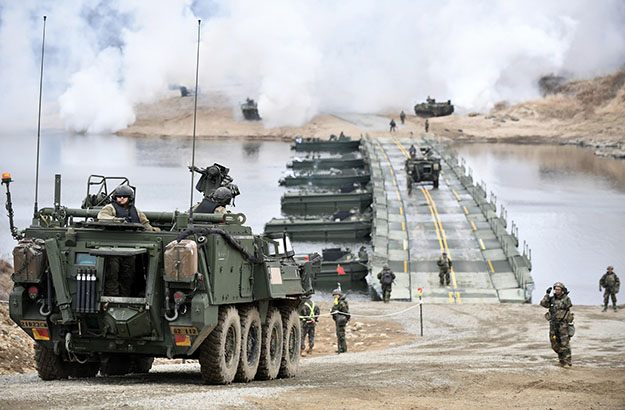There are no major ongoing wars, but soldiers are still away from their homes and families more than ever before, according to a Military.com study published this week.
Despite the absence of major conflict, military personnel continue to deploy for various missions, including training exercises, peacekeeping operations, and responding to natural disasters.
"It has been a huge struggle, especially as (we're) trying to start a family," an NCO who spoke to Military.com on the condition of anonymity said. "I'm not sure what's going to happen with my marriage, but there is a huge chance I'm leaving the Army."
The demand for military personnel to deploy has increased in recent years due to geopolitical tensions and an emphasis on maintaining readiness and preparedness. Many soldiers are also participating in rotational deployments, which means they are deployed for a set amount of time before returning home and being replaced by another unit.
"We're as high or higher with the (operations tempo)," Sergeant Major of the Army Michael Grinston told Military.com, referring to the frequency with which soldiers are away from home compared to the peak of the Global War on Terrorism.
The Army has roughly120,000 soldiers deployed abroad this month, according to internal service data reviewed by Military.com.
In comparison, the entire Department of Defense had an all-time high of 187,900 troops in Afghanistan and Iraq in 2008, according to the Military.com story. That number, the news organization pointed out, dipped quickly as those wars drew down in hostilities.
The Army was also roughly 70,000 soldiers larger in 2008.
"The average citizen doesn't know how stressful this is on our families. I think it has been an incredible strain on our soldiers and our families," Grinston told Military.com. "We have a 100% obligation to be ready for the worst-case scenario, so we have to go to the CTC (combat training center). The American people would never forgive us if we sent soldiers to Europe that weren't as trained as the best we could get."
While advancements in technology have allowed for more frequent communication between soldiers and their loved ones back home, the strain of prolonged separation can still take a toll on both the soldiers and their families. The military recognizes this and provides support through programs such as counseling, financial assistance, and family services.
The soldiers interviewed for the story said "they're ready for war and are more than happy to go to combat, but did not expect this much time away from home during what is effectively peacetime," Military.com reported.
Deployments are typically scheduled two to three years in advance, an official told Military.com, but changes to those missions are changing as world events change. The deployment schedule doesn't include time in the field and other assignments and schools that take soldiers away from home as well.
"Just one less thing, just a little more breathing room would be extremely helpful," an Army lieutenant currently deployed in Poland told Military.com.




Read Comments